Abstract
Two or three graded infections with oocysts of Eimeria acervulina, E. tenella, E. necatrix and E. maxima produced a resistance to further infection with the immunizing species. The oocyst output after the second infection, in each case, was lower than that after the initial dose indicating the substantial immunizing effect of the initial infection. The species could be placed in a descending order of immunizing activity as follows: E. maxima, E. acervulina, E. tenella and E. necatrix. A solid immunity to the immunizing species in no way prevented the development of an additional infection, here referred to as `cross-infection', with any of the species studied.
Serum precipitins were produced in infections with all four species, the response to infection with E. necatrix being less marked than to the other species. A first challenge of immune fowls with the immunizing species produced some increase in precipitation in agar whereas a second challenge had no such effect; the significance of this lack of response is discussed. Usually, fowls immunized against one species and then infected with an additional one, produced serum precipitins which reacted only with the antigen of the additional species. But E. tenella immunized fowls, when given an additional infection with E. necatrix, produced precipitins that reacted with antigens of both species. The same was also true when E. necatrix immunized fowls were infected with E. tenella.
Full text
PDF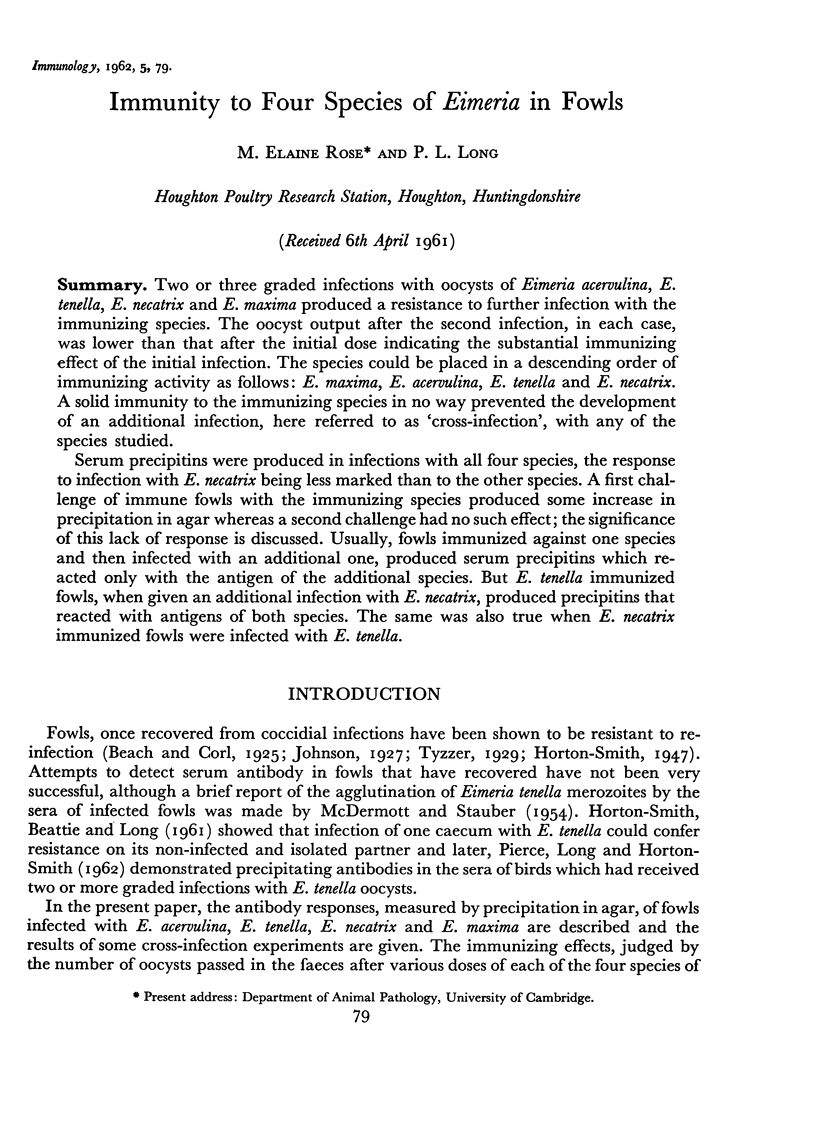



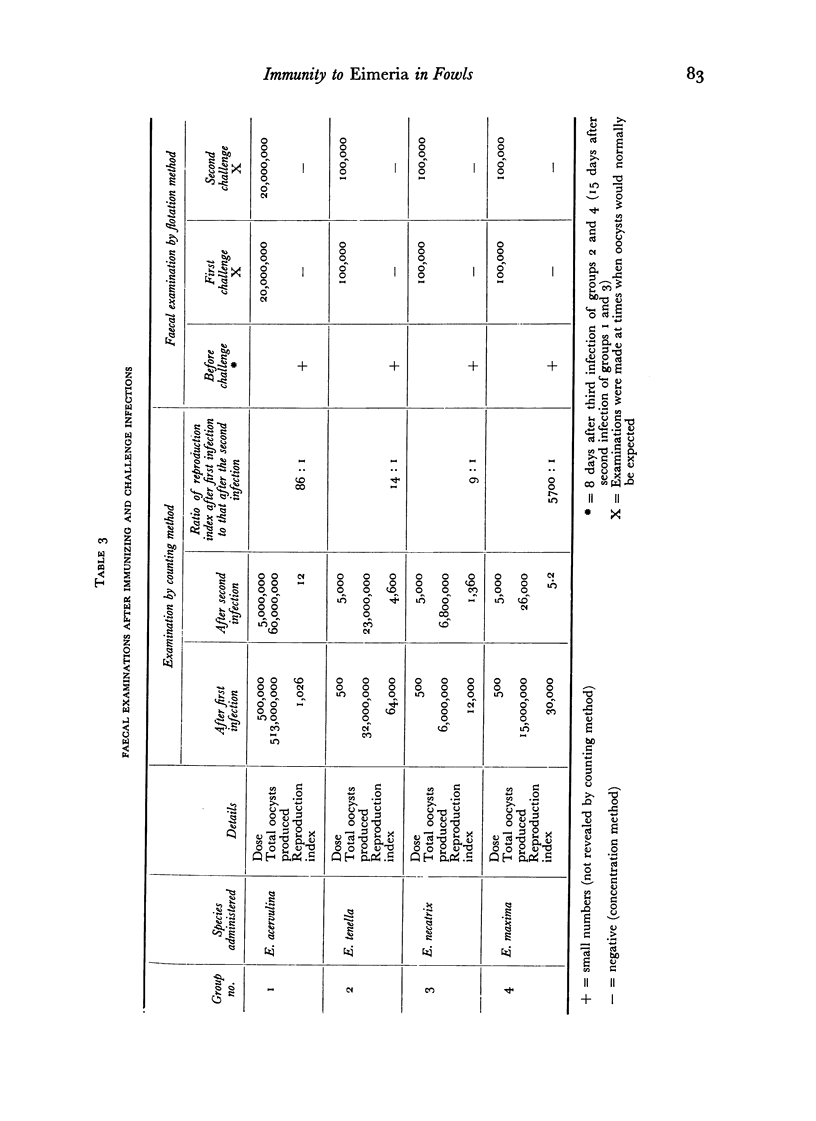
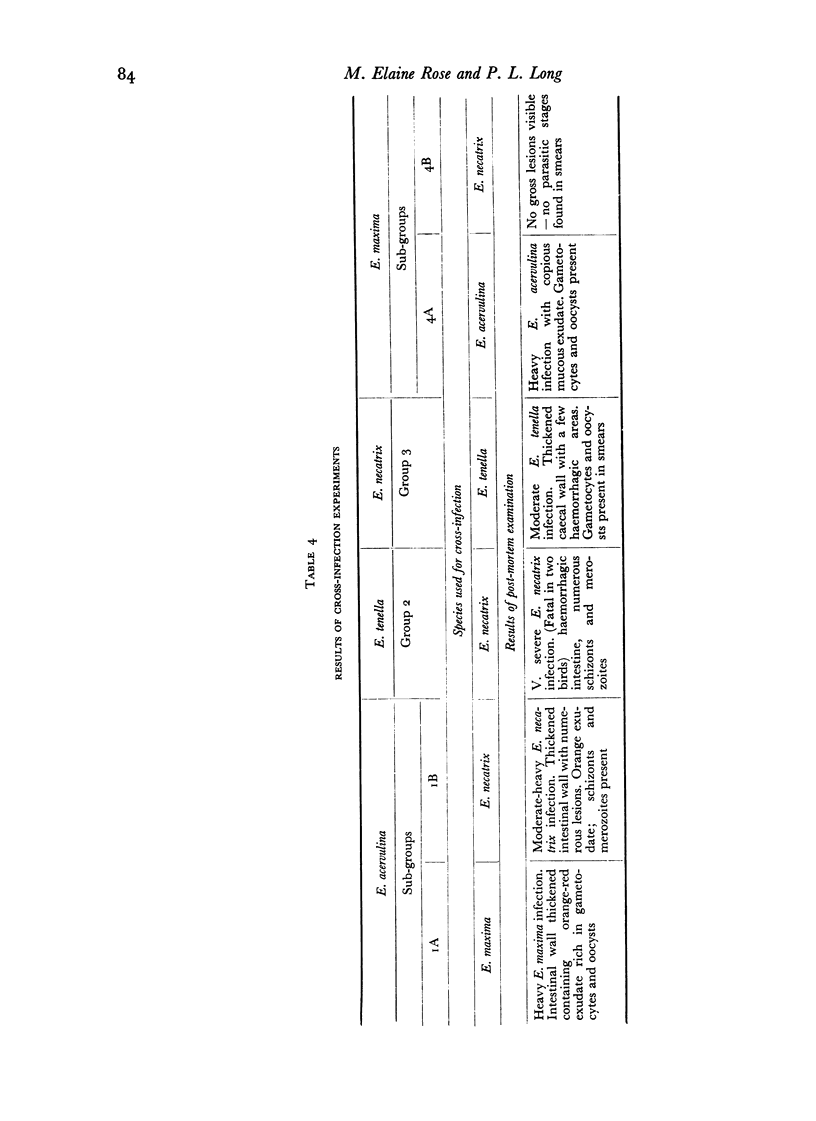


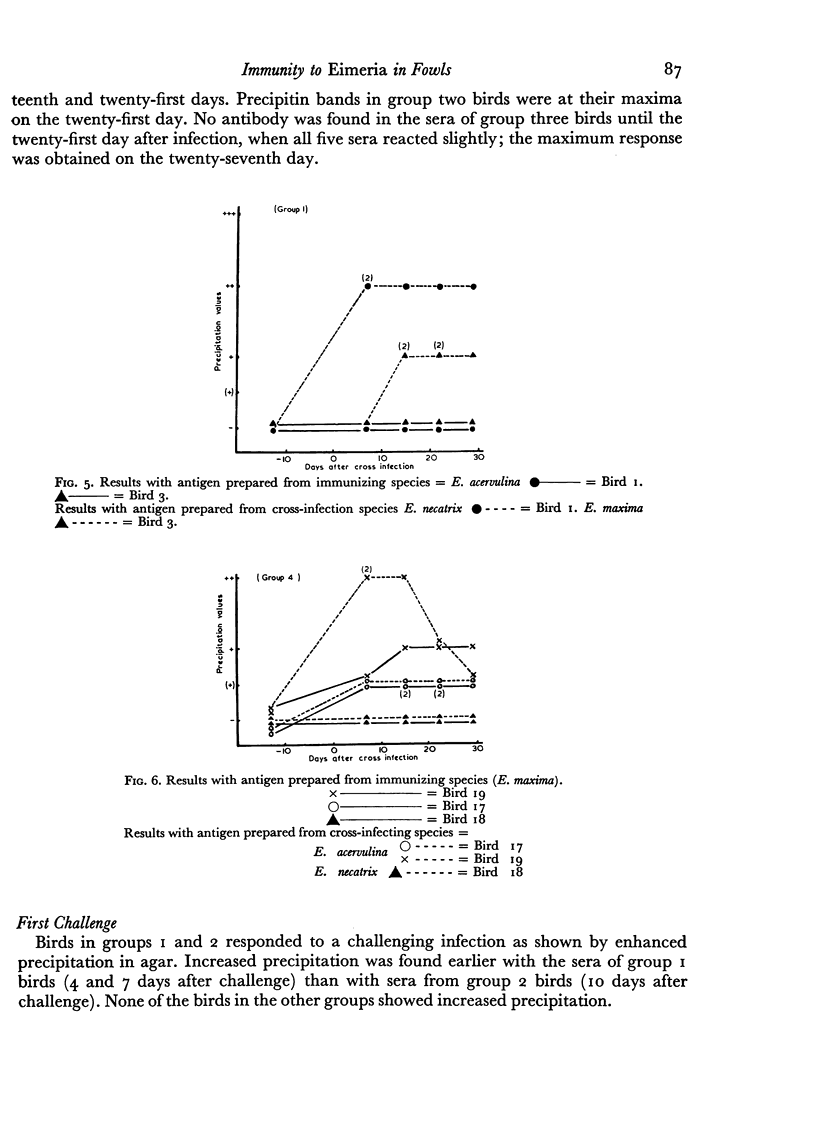


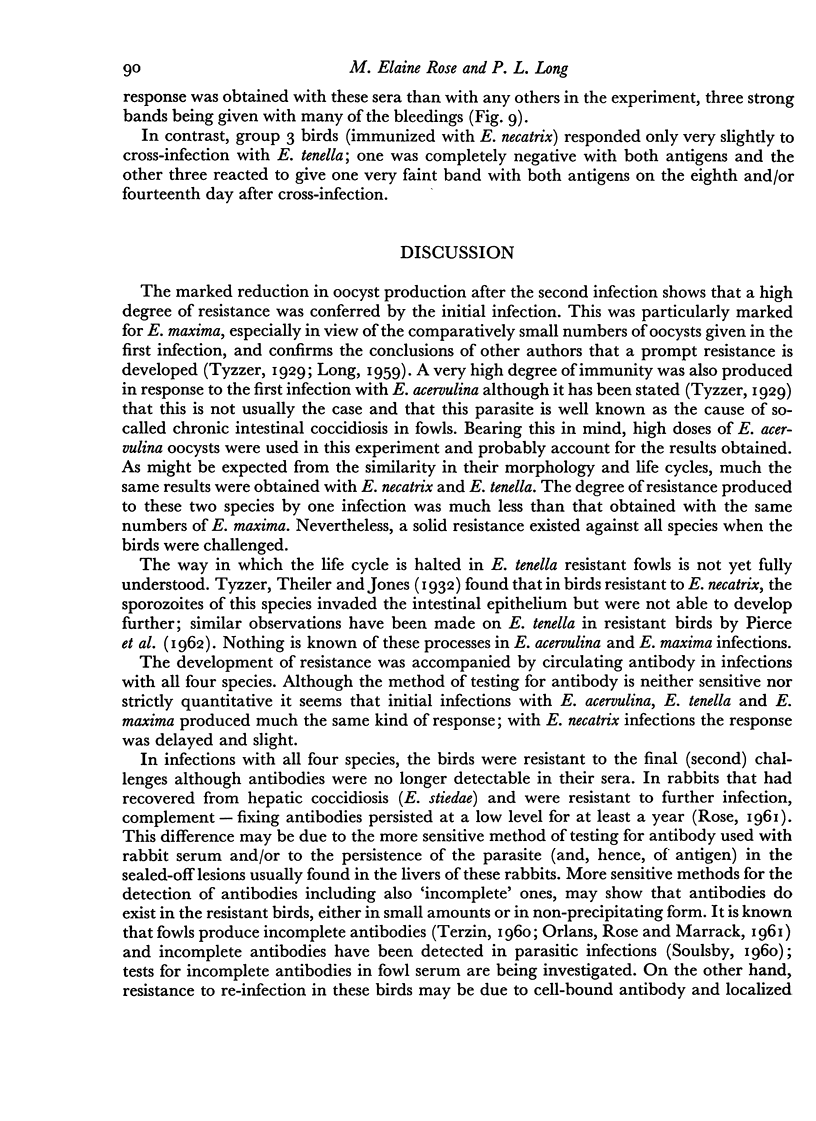

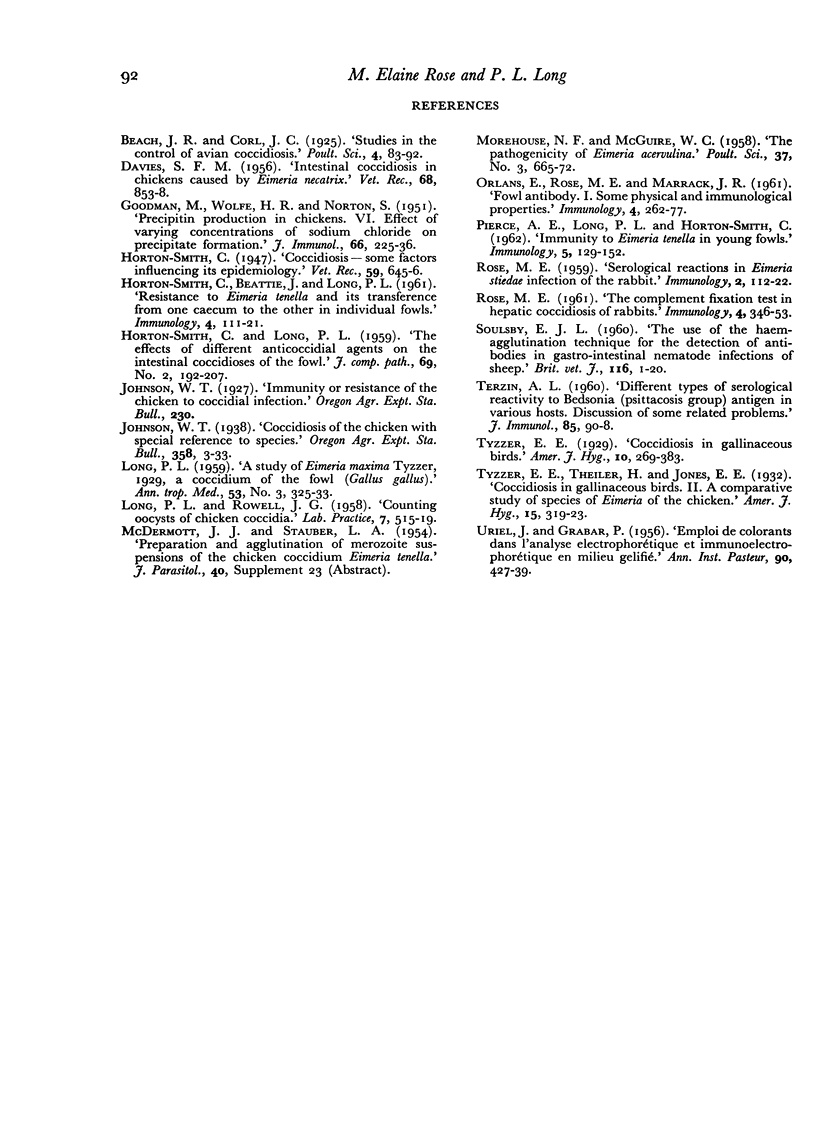
Images in this article
Selected References
These references are in PubMed. This may not be the complete list of references from this article.
- GOODMAN M., WOLFE H. R., NORTON S. Precipitin production in chickens. VI. The effect of varying concentrations of NaCl on precipitate formation. J Immunol. 1951 Feb;66(2):225–236. [PubMed] [Google Scholar]
- HORTON-SMITH C., LONG P. L. The effects of different anticoccidial agents on the intestinal coccidioses of the fowl. J Comp Pathol. 1959 Apr;69(2):192–207. doi: 10.1016/s0368-1742(59)80018-7. [DOI] [PubMed] [Google Scholar]
- LONG P. L. A study of Eimeria maxima Tyzzer, 1929, a coccidium of the fowl (Gallus gallus). Ann Trop Med Parasitol. 1959 Sep;53:325–333. doi: 10.1080/00034983.1959.11685930. [DOI] [PubMed] [Google Scholar]
- ROSE M. E. The complement-fixation test in hepatic coccidiosis of rabbits. Immunology. 1961 Oct;4:346–353. [PMC free article] [PubMed] [Google Scholar]
- TERZIN A. L. Different types of serologic reactivity to Bedsonia (psittacosis group) antigen in various hosts. Discussion of some related problems. J Immunol. 1960 Jul;85:90–98. [PubMed] [Google Scholar]



